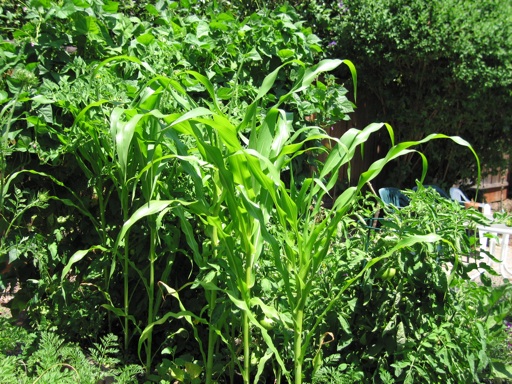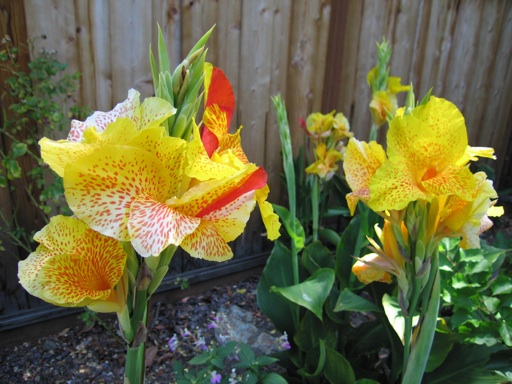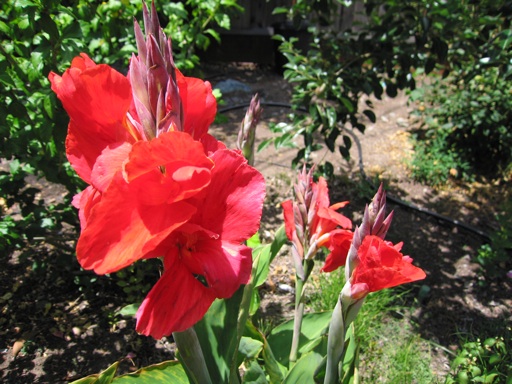
I planted the corn in this picture back in mid-April when it was about two inches high. Corn has been one of the fastest growing plants in our raised bed vegetable garden this year. It has grown particularly fast in the past month. It is already about four feet tall, even though it’s getting crowded by nearby tomato and bean plants that I planted the corn too close to. The fastest growing plants in our garden this year have been pole beans (behind the corn in the picture), corn, tomatoes, and zucchini.
I planted a sweet white variety of corn this year. I tend to prefer the white corn varieties over the yellow corn varieties, because I have found that white corn is usually sweeter. Last year, I grew a bi-colored yellow and white corn variety which turned out to be very flavorful and buttery.
Our tomatoes and beans are also growing vigorously and crowding our nearby peppers and eggplants. The peppers and eggplants haven’t been growing very much. I think that’s because they are not getting enough sun. Perhaps, they don’t have enough root space either. I really underestimated how large some of these fruit/vegetables would get. Next year, I will try to have more restraint by setting out fewer plants.
June 28 2009 | Corn | Comments Off on Fast Growing Corn


The cannas I planted in our yard a few years ago are flowering again. We are growing red, yellow, and orange cannas. It’s nice to have perennial flowers like cannas in the garden that don’t need to be replanted every year.
Our cannas have grown back year after year with relatively little care. Cannas need watering every few days during our dry season, when I water them with our automatic micro-spray watering system. They also need to be cut to the ground in the fall after bloom. Although, I haven’t ever fertilized them.
Cannas tend to multiply over time by producing new rhizomes. Although, our cannas haven’t spread very fast, and they haven’t been invasive. One can dig up the rhizomes and separate them every few years. The yellow spotted cannas in the first picture above were given to us by a friend who had too many of them.
In our climate where the soil never freezes, I leave our canna rhizomes in the ground over the winter. They survive our occasional frosts and dips into the 20s F without any damage. However, I have been told that in climates that have much colder winters, the top several inches of soil freezes. In these climates, cannas need to be dug up and stored inside in the winter or planted next to a building where they won’t freeze.
June 28 2009 | Cannas | Comments Off on Cannas Are Back


